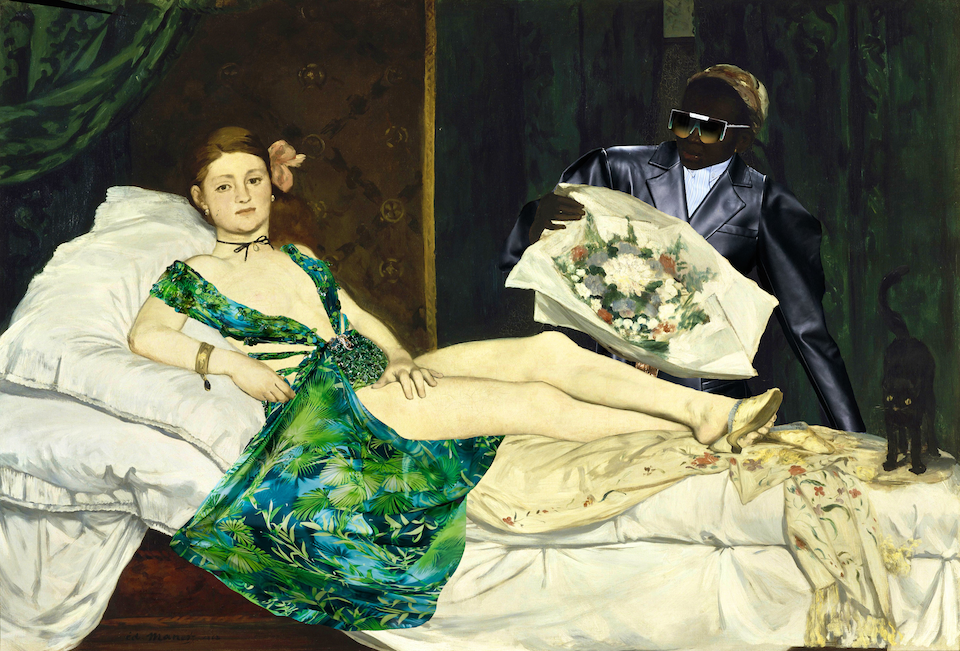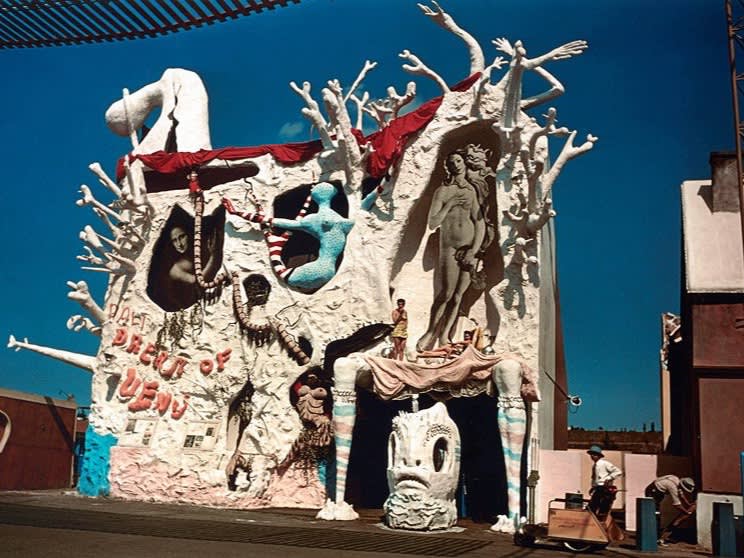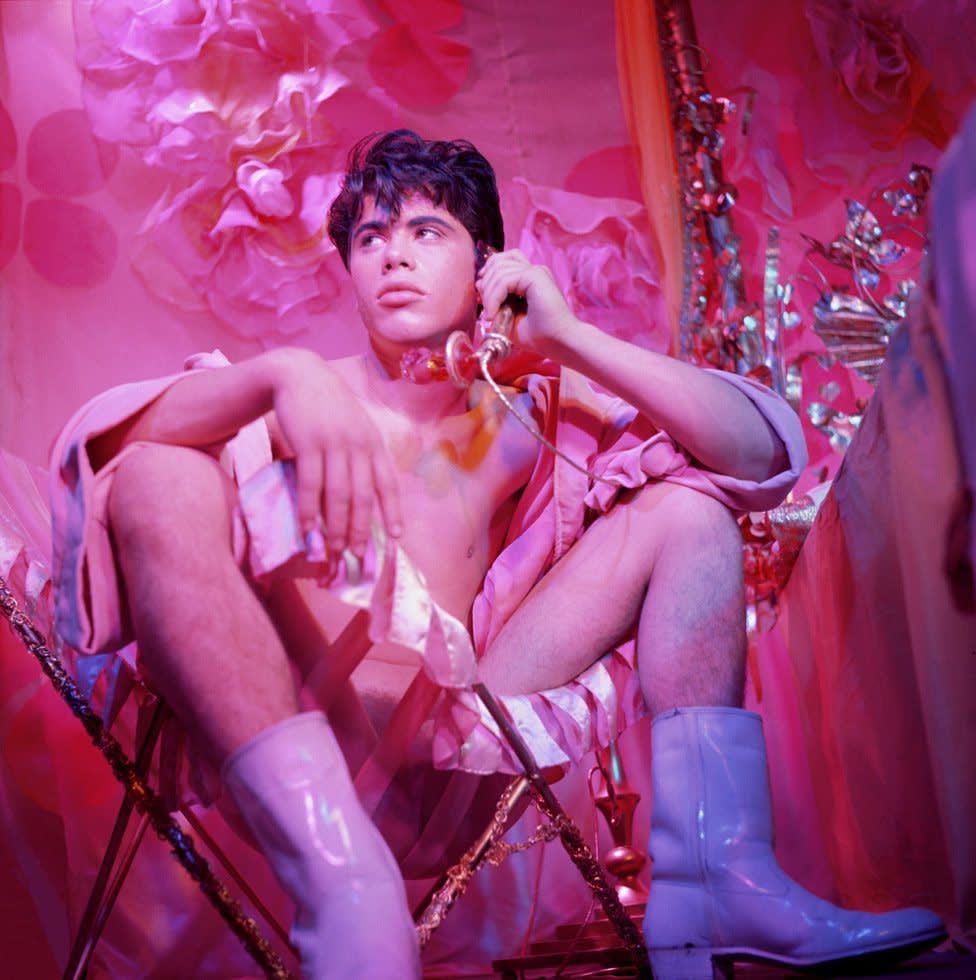
James Bidgood
Bobby Kendall, Pink Narcissus, 1970s
Lying somewhere within the intersection between Cecil Beaton, Andy Warhol, and Robert Mapplethorpe, New York photographer and multimedia artist James Bidgood has carved out his own space within gay art that remains a staple of the camp aesthetic today.
Bidgood’s diverse range of creative fields—which were largely self-taught—informed his unique style. Photography, set and costume design, and filmmaking were done in Bidgood’s tiny Hell’s Kitchen apartment. While underground cultures of drag and art were largely accepting of a variety of gender roles and sexualities, the pre-Stonewall era city was still overwhelmingly hostile toward homosexuality. Bidgood’s work emerged as a rebellion against society’s narrow-minded viewpoint because, despite these hardships, it was uncompromisingly gay.
James Bidgood
Costume for Junior League Mardi Gras Ball Pageant, 1960s
James Bidgood
Photography for First Cover of Bobby Kendall, 1960s
James Bidgood
Triple Exposure Photograph of Jack Frost with Orchid Filter, 1960s
James Bidgood
Photograph of Valentine (Tommy Coombs), 1960s
Born in Madison, Wisconsin at the height of the Great Depression, Bidgood grew up on paper dolls and technicolor musicals. At age 18 he moved to New York and became immersed in the underground drag culture that thrived there. By the 1950s, Bidgood was performing as drag persona Terry Howe, as well as working as a set and lighting designer at the New York nightclub Club 82. After graduating from Parsons School of Design in the 1960s, Bidgood went on to design costumes for high society women, as well as his own drag persona. Bidgood’s fascination with ephemera led to the use of repurposed household items within his designs. His experience in costume design would come to inform his photographic works, with Bidgood designing elaborate costumes for photoshoots.
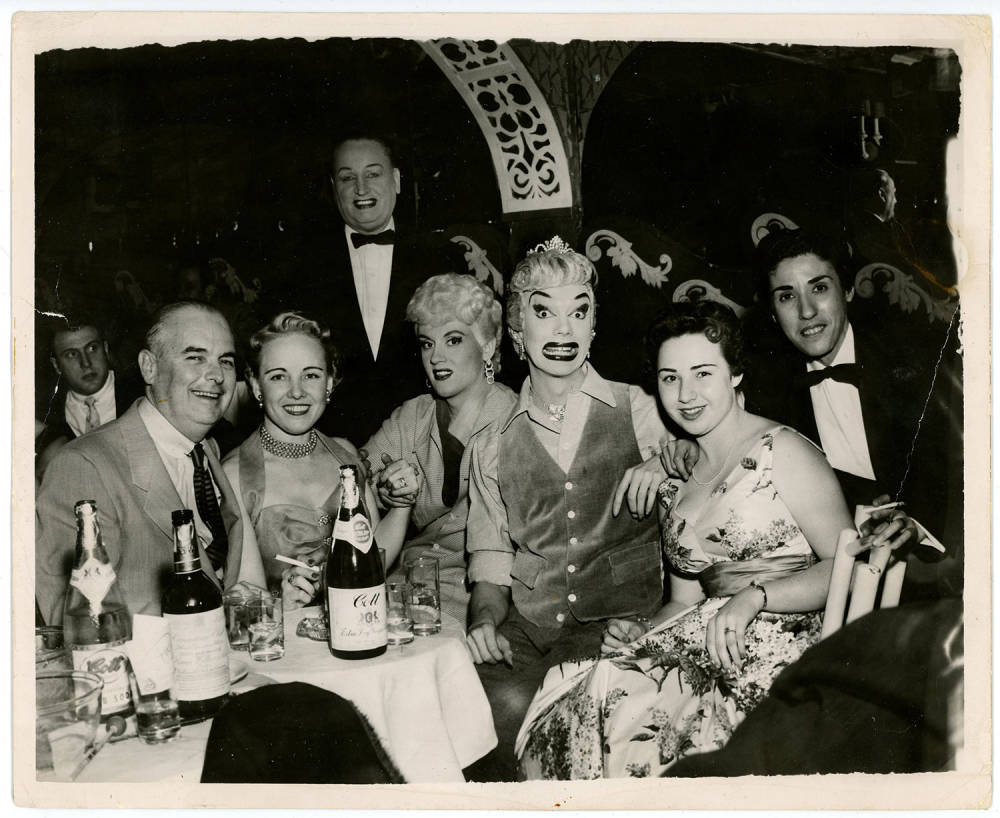
James Bidgood Center as Terry Howe
“Mixing” at Club 82, 1950s
Turning his attention to photography, Bidgood began shooting “physique photography,” a highly-coded form of gay pornography that was not sexually explicit, but elicited the male gaze through Bidgood’s lens. This work emerged at an interesting time, during which a series of court cases relaxed government censorship of art. Bidgood’s work was originally published as erotica under a pseudonym and ordered from the back of magazines, and would appear under the guise of health and fitness in magazines like The Young Physique and Muscleboy. Bidgood would later go on to shoot covers for these publications.
James Bidgood
Apache (Tommy Coombs), 1964-66
James Bidgood
At Cave Opening, Sandcastles (Bobby Kendall and Jay Garvin), 1960s
James Bidgood
Double Image, Test Shots (Bobby Kendall), 1960s
James Bidgood
Field of Blue Flowers, 1960s
James Bidgood
Huck Finn (Tommy Coombs), 1964-66
James Bidgood
Lobster, Water Colors (Jay Garvin), 1960s
James Bidgood
Pan from Behind, 1965-69
James Bidgood
Pan, 1960s
James Bidgood
Pearl, Water Colors (Jay Garvin), 1960-64
James Bidgood
Photo from Bidgood's Taschen Book
James Bidgood
Pink Flowers, Water Colors (Jay Garvin), 1960-64
James Bidgood
Trunk, Water Colors (Jay Garvin), 1960s
Bidgood’s work was unique in its deviation from the coded homoeroticism that existed in art at the time, choosing instead to be unapologetically camp. Inspired by pulp aesthetic and the spectacle of Broadway, Bidgood applied glamour to male erotic fantasy, utilizing forced perspective, extravagant homemade costuming, sets, and props, and vibrant colors to create a dreamlike erotic fantasy displayed through the male gaze. The photographs were an escape from the hetero-policing of the outside world, reveling in fantasy, unironic kitsch, and lush color for the sake of aesthetic preference. Bidgood’s photographs aimed to make both a political and artistic statement about politics and sexuality, and paved the way for artists like Pierre et Gilles and David LaChapelle. Unfortunately, he remained largely unknown for most of his career.
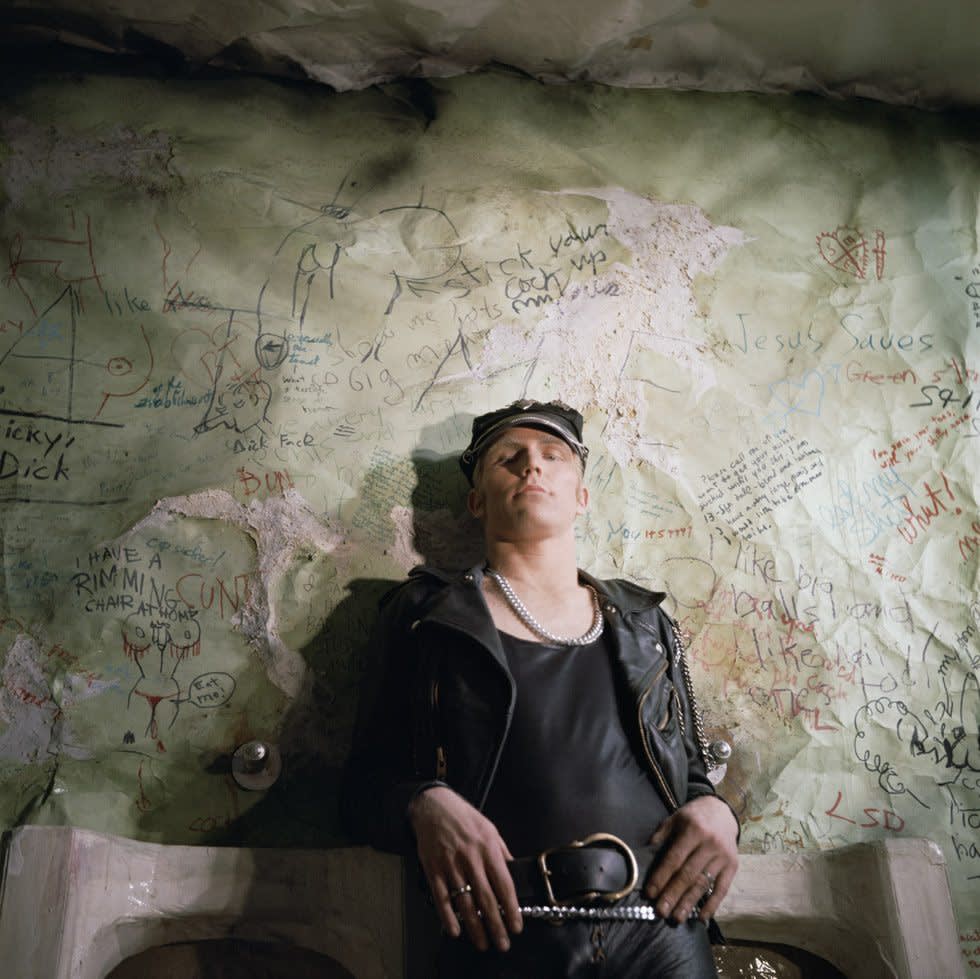
James Bidgood
Leaning Against Urinal (Trate Farell), Pink Narcissus, 1970s
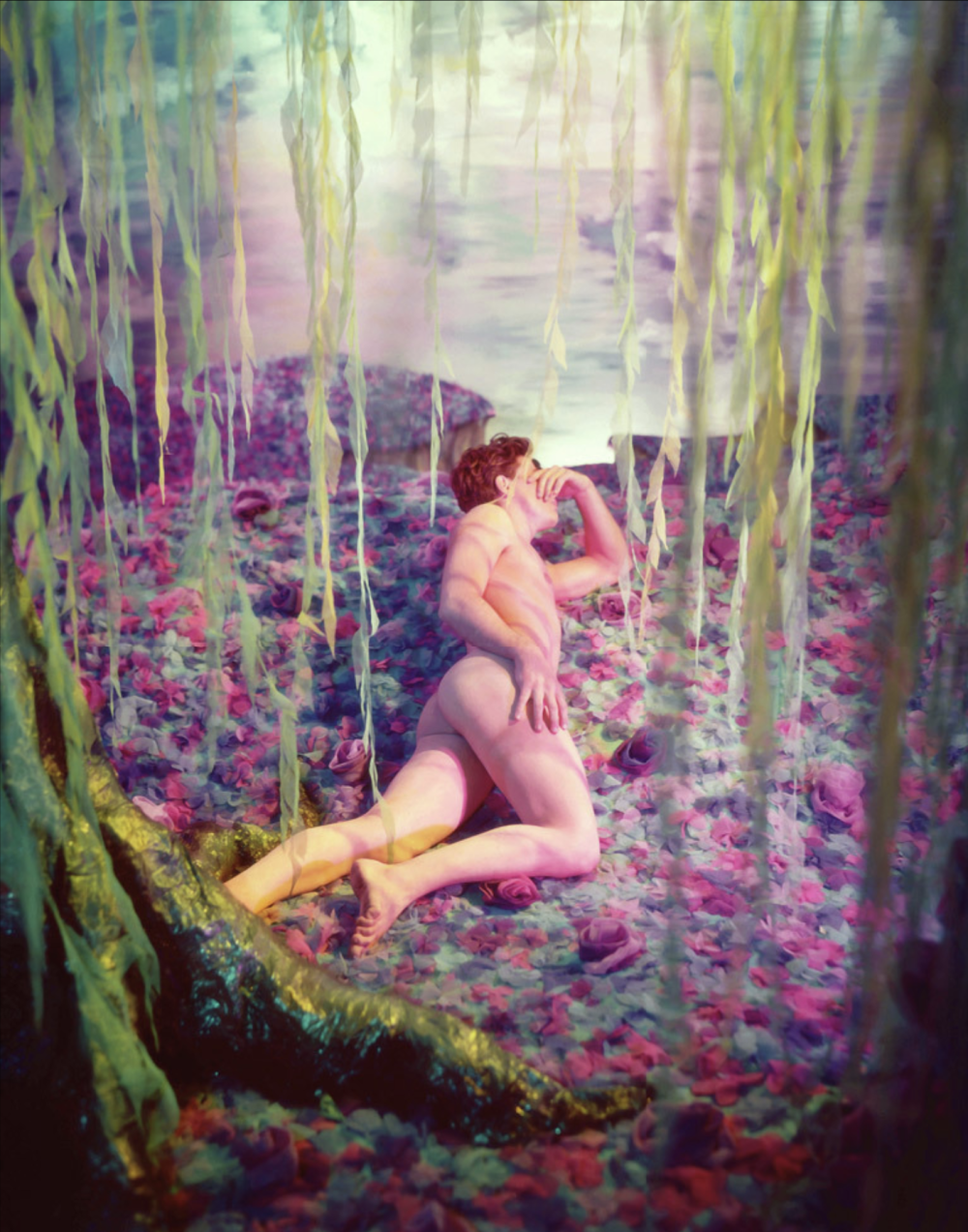
James Bidgood
Willow Tree (Bruce Kirkman), 1964-66
James Bidgood’s most notable work, Pink Narcissus, was a 65 minute arthouse film created in 1971. Drawing on his own experience of photography and costume and set design, Bidgood produced the film himself in his apartment. Free of dialogue, the film presents the dream sequence of a young male prostitute, played by Bidgood’s muse Bobby Kendall. Fantasies draw on Disney and MGM musicals, but have a distinctly homosexual perspective. Nudity, ultra-kitsch setting, and costumes branded the film as “A Homosexual’s Visual Fantasy,” carving out a crucial piece of queer art within cinema. The film was released anonymously, creating a contradiction between the film’s message of gay visibility and its consequential stifling of gay authorship. Still, Pink Narcissus remains a landmark of gay cinema and Bidgood’s most important work.
James Bidgood
Pink Narcissus, Japanese Film Poster, 1971
James Bidgood
Backstage during the filming of Pink Narcissus, 1970s
James Bidgood
Bobby Kendall in Pink Narcissus, 1970s
James Bidgood
Bobby Kendall, Pink Narcissus, 1970s
James Bidgood
Bobby Kendall, Pink Narcissus, 1970s
James Bidgood
Bobby Kendall, Pink Narcissus, 1970s
James Bidgood
Bullfighter (Bobby Kendall), Pink Narcissus, 1970s
James Bidgood
Cadet, Pink Narcissus, 1970s
James Bidgood
Cyclist Sprawled on Tiles in Front of Urinals (Trate Farell), Pink Narcissus, 1970s
James Bidgood
Don Brooks, Pink Narcissus, 1970s
James Bidgood
Harem Boy in Front of Peacock, Pink Narcissus, 1970s
After a 40-year hiatus, James Bidgood emerged to do photographs and sets for Christian Louboutin. His work was published in Out magazine in 2008. In recent years, Bidgood has expressed interest in returning to his work to showcase a series “about real love affairs of gay people” set in fairytale settings. Though Bidgood’s work is largely ignored by mainstream art, his work is a crucial piece of gay art that must be celebrated today.
